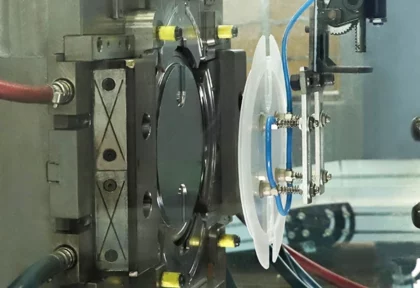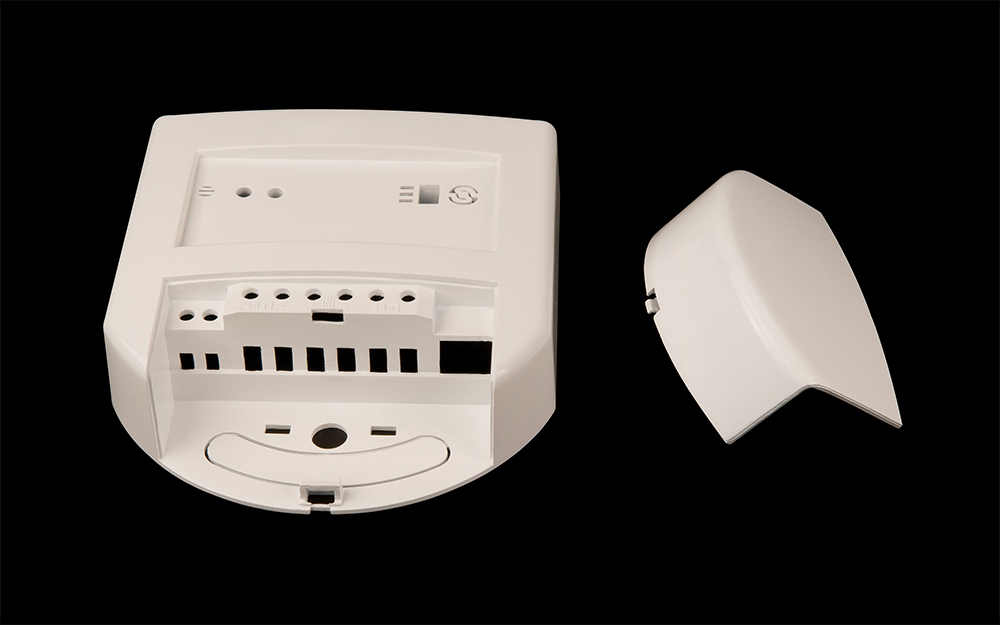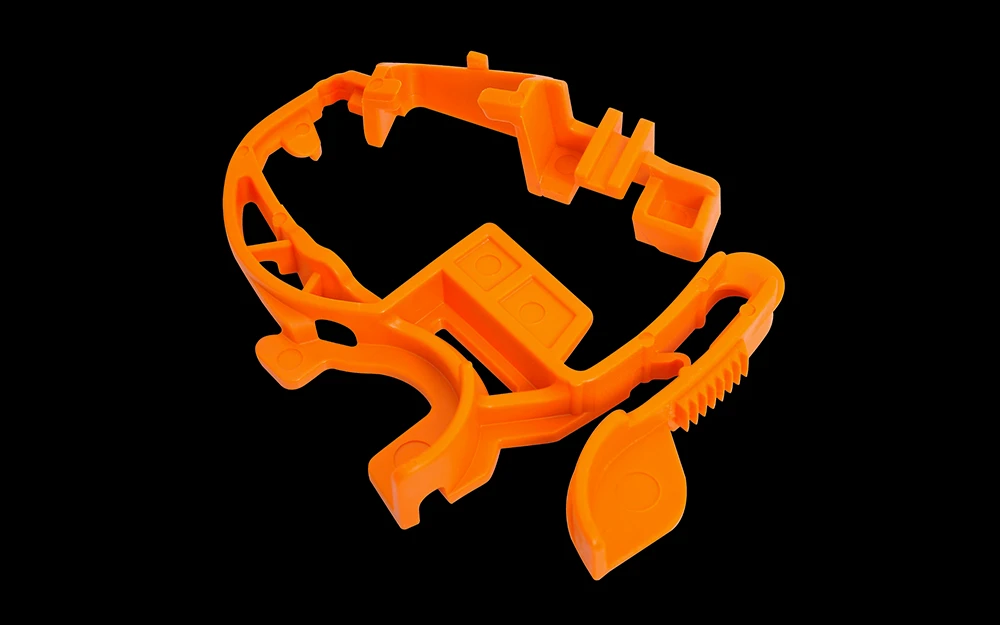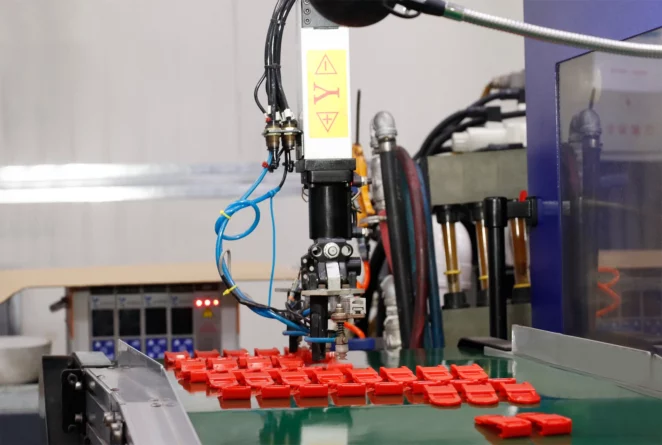Injection molding for prototyping
Our rapid injection molding service enables us to produce custom, cost-effective plastic parts. We also use prototype toolings to accelerate manufacturing cycles and reduce costs.
- 1 to 1000+ parts
- Ready within 3+ weeks
- 15+ production grades of plastic
- Versatile manufacturing capabilities
- Low rapid tooling cost
What is rapid injection molding?
At Protolis, our rapid injection molding service is ideal for prototyping and small series production—offering cost-effective solutions and lead times as fast as 2 to 4 weeks thanks to our quick tooling capabilities. This process uses the same high-pressure injection molding technology found in mass production, ensuring excellent part consistency, fine detail, and high dimensional accuracy.
We work with a wide range of plastic materials—including technical grades—and can incorporate additives such as flame retardants, UV stabilizers, and colorants to meet specific performance needs.
Rapid injection molding is perfectly suited for the automotive, consumer electronics, medical, electrical, and industrial sectors, allowing the creation of complex, functional components with production-quality finishes.
What is rapid injection molding?

Additional quick turn injection molding services
Our rapid injection molding service supports a wide range of part sizes and complexities, making it ideal for producing functional prototypes, housings, connectors, brackets, and other precision plastic components for testing, validation, and market launch.

Overmolding and insert molding
Our expertise enables to create a single part composed of multiple materials and integrated parts with metal inserts.

Rapid tooling
With our cost-efficient rapid prototype tooling, we enable our clients to benefit from shorter production times and parts with fewer geometric constraints.

Post-processing
Our finishes and fitting techniques ensure the final appearance, functionality, and quality of the final assembled parts.
Your project in 6 steps
Get your plastic prototypes or small-scale production injected parts in no time. A flexible organization providing a personalized response to your need without any setback.
Your quote
Upload files and specifications
DFM
Design optimizations
Rapid tooling
Sampling and adjustments
Production
Close follow-up
Quality control
Dimensional report, pictures, and videos
Delivery
Packing, door-to-door tracking
Applications
Plastic injection molded parts find extensive applications across diverse industries, including automotive, electronic, medical, packaging, and more. This manufacturing process is suitable for creating a variety of parts, including casing, housings, containers, medical equipment, consumer appliances, and many more.
Injection molding materials
We offer a wide range of production-grade thermoplastic for prototyping and on-demand manufacturing of plastic parts. Below is a non-exhaustive list of commonly used materials for plastic injection molding.
General rapid injection characteristics
Rapid molding finishes
Discover a wide range of finishing options that enhance the aesthetic appeal, functionality, and durability of your plastic molded parts.

The pigmentation process makes it possible to produce pieces naturally colored in the mass of certain plastics. It is possible to choose the desired RAL or Pantone, with color pigments mixed with the material. This is applicable for rigid or flexible parts.

This type of finishing is a high-level polishing, also known as mirror polishing, that gives the part a smooth, reflective, and aesthetically pleasing appearance.

There are several degrees of transparency depending on the technologies and materials used. The opacity can also be manually adjusted by polishing, sanding, or pigmentation.

Chrome plating is a technique of applying a thin layer of chromium onto a substrate through galvanic or vacuum plating. This additional layer not only improves the aesthetic but prevents corrosion and wear.

Whether by applying a surface treatment or by pigmentation, matching the colors of your prototypes and parts is important for meeting your specifications and the visual quality of the final product.

We offer various methods to print or engrave your logo, texts, and symbols to give a finished appearance to your pieces.
Injection molding capabilities
At Protolis, we have an in-house mold workshop to provide cost-effective rapid mold tooling. Our injection unit is equipped with more than 20 injection machines, from 70 to 1200T, and most post-processing operations can be completed in our facilities.
We have developed expertise and processes to make plastic injection molding suitable for small-scale production.
Rapid injection molding FAQs
What are the common defects in plastic injection molding and how can they be prevented?
Injection molding is a complex technology with various potential defects, each requiring careful consideration for prevention:
- Warping can occur due to uneven cooling, emphasizing the importance of a well-designed cooling system and precise control of process parameters.
- Sink marks, small depressions on the surface, can be minimized by maintaining uniform wall thickness and optimizing pressure and time settings.
- Short shots, incomplete parts, can be prevented by ensuring the material is at the correct temperature and the mold is adequately vented.
- Flash, excess material escaping the mold, is mitigated through proper maintenance, clamping force, and material viscosity control.
- Burn marks, discoloration on the part, are prevented by optimizing gas venting, controlling melt and mold temperature, and adjusting injection speed.
Our guidelines provide further insight into managing these complexities.
What material is used for prototype molds?
When considering materials for prototype molds, aluminum stands out as the most common choice, often interchangeably referred to as an “aluminum mold” synonymous with prototype or pilot molds.
The appeal of aluminum lies in its exceptional heat conductivity, facilitating quicker cooling and more efficient machining. However, the popularity of aluminum has diminished due to its limitations in terms of strength and durability. To address these concerns, we advice for the use of steel with a hardness of 30 HRC. Advances in machining technology, particularly with high-speed CNC, have significantly improved the machinability of steel, reducing the historical gap that favored aluminum. This shift positions steel molds with 30 HRC as a compelling alternative for prototype applications.
How cost-effective is plastic injection molding for rapid prototyping and low-volume manufacturing?
Unfortunately, it is not the most cost-effective method for these purposes due to high setup fees (injection tooling), limited design flexibility, and longer lead times. However, it remains a unique technology capable of delivering high-quality parts with impeccable finish and dimensions. The extensive range of available grades, each with specific properties, is immensely advantageous compared to other prototyping technologies. To enhance cost-effectiveness, the key lies in minimizing the initial investment in molds, especially through the use of prototype molds. We have developed a specialized knowledge and methodology to achieve this goal.
Related resources

Plastic Injection Molding Guide

Compression Molding vs. Injection Molding: Which technology to choose for your flexible parts?












